- About MAA
- Membership
- MAA Publications
- Periodicals
- Blogs
- MAA Book Series
- MAA Press (an imprint of the AMS)
- MAA Notes
- MAA Reviews
- Mathematical Communication
- Information for Libraries
- Author Resources
- Advertise with MAA
- Meetings
- Competitions
- Programs
- Communities
- MAA Sections
- SIGMAA
- MAA Connect
- Students
- MAA Awards
- Awards Booklets
- Writing Awards
- Teaching Awards
- Service Awards
- Research Awards
- Lecture Awards
- Putnam Competition Individual and Team Winners
- D. E. Shaw Group AMC 8 Awards & Certificates
- Maryam Mirzakhani AMC 10 A Awards & Certificates
- Two Sigma AMC 10 B Awards & Certificates
- Jane Street AMC 12 A Awards & Certificates
- Akamai AMC 12 B Awards & Certificates
- High School Teachers
- News
You are here
Who's That Mathematician? Paul R. Halmos Collection - Page 15
For more information about Paul R. Halmos (1916-2006) and about the Paul R. Halmos Photograph Collection, please see the introduction to this article on page 1. A new page featuring six photographs will be posted at the start of each week during 2012.
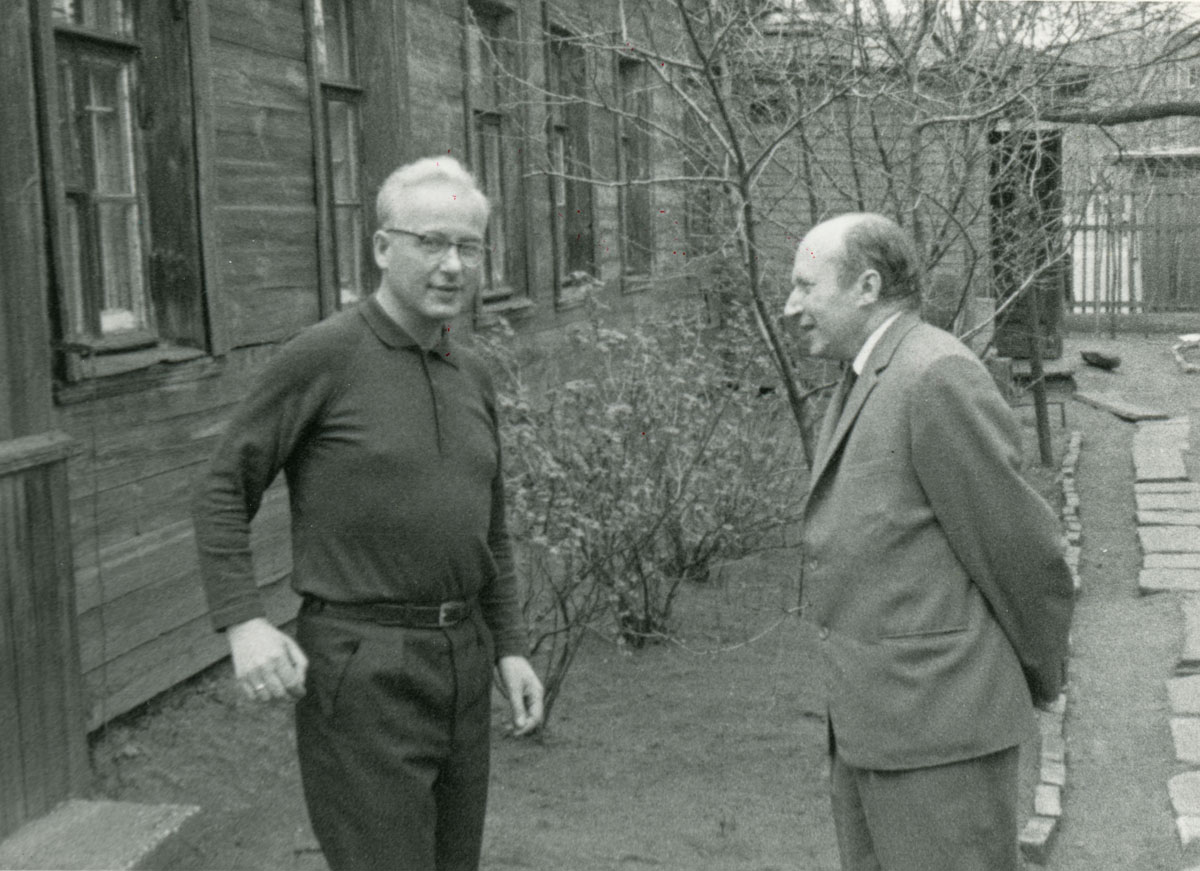
Halmos photographed Sergei Fomin (1917-1975), left, and Israil Gelfand (1913-2009) in Moscow, Russia, in May of 1965. Halmos visited mathematicians in Moscow and Leningrad (St. Petersburg) for one month during April and May of 1965 as part of a 1964-65 exchange program between the scientific academies of the U.S. and U.S.S.R. that sent 20 scientists from each country to the other.
Born in Moscow, Fomin earned his Ph.D. in 1942 under A. N. Kolmogorov at the Steklov Institute of Mathematics in Moscow. However, he actually defended his thesis at the Steklov Institute's temporary home in Kazan while he was a member of the Red Army. During his career at Moscow State University, Fomin worked in many areas, including general topology, ergodic and measure theory, and mathematical biology (MacTutor Archive).
Born in Odessa, Ukraine, Gelfand earned his Ph.D. in functional analysis in 1935 under A. N. Kolmogorov at Moscow State University. After six years at the USSR Academy of Sciences, he moved in 1941 to Moscow State University, where he worked on representation theory of non-compact groups, differential equations, computational mathematics, integral geometry, and, with his colleague Fomin, mathematical biology. He moved to Rutgers University in New Jersey in 1990 (MacTutor Archive). Gelfand also appears in a photograph on page 16 of this collection.
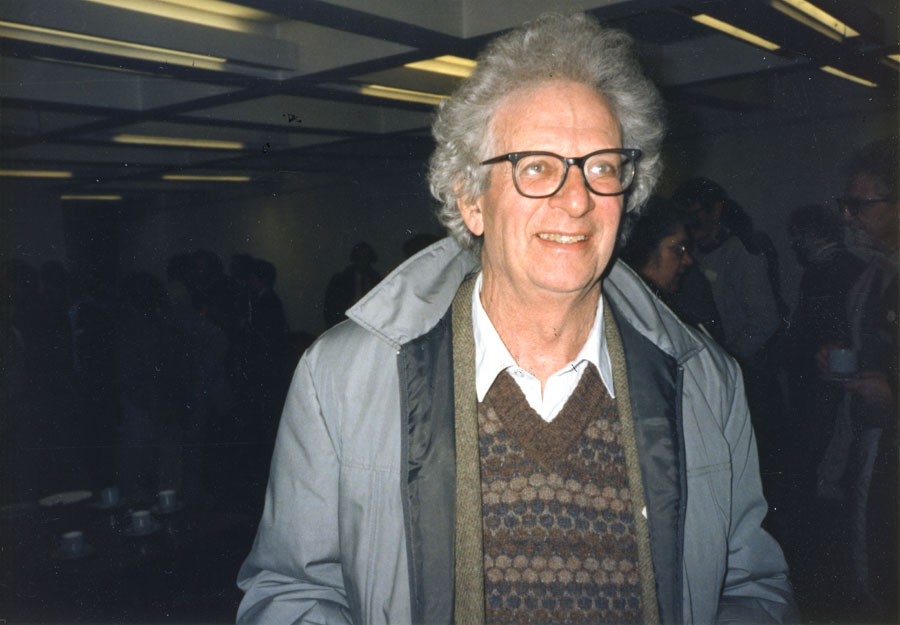
Albrecht Fröhlich (1916-2001) was photographed by Halmos at the British Mathematical Colloquium in Hull, England, in April of 1986. Born in Munich, Germany, "Ali" Fröhlich and his parents fled the Nazis soon after they came to power in 1933, moving first to France and then to Palestine. Fröhlich eventually earned his Ph.D. at the University of Bristol, England, in 1951, and spent most of his career at King's College, London, working in group theory and algebraic number theory (MacTutor Archive).
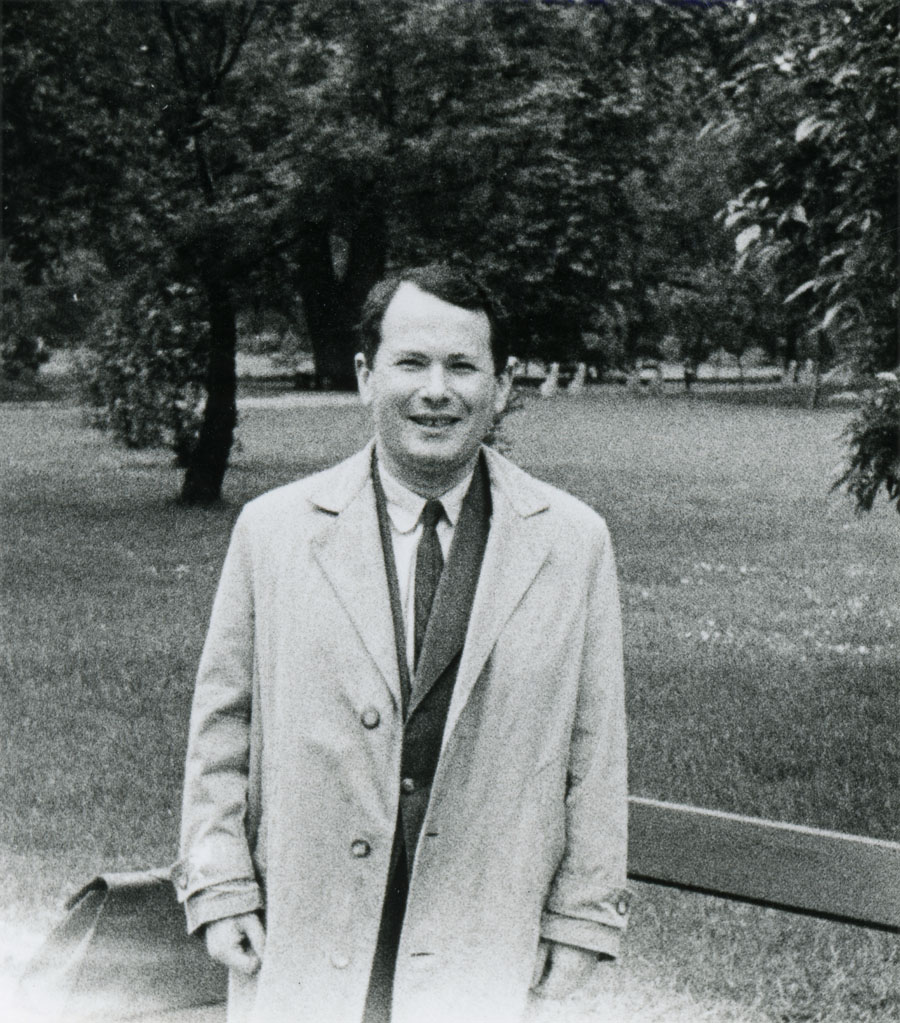
Halmos photographed László Fuchs in Budapest, Hungary, in May of 1965. As one of two hosts for the Budapest portion of Halmos' May 19 - June 1 visit to Hungary, Fuchs met Halmos at the airport on May 19. During his visit, Halmos addressed the János Bolyai Mathematical Society in Budapest and traveled to Szeged to meet with Béla Szökefalvy-Nagy, photographed on page 9 and page 14 of this collection.
László Fuchs earned his Ph.D. in 1947 at Eötvös Loránd University in Budapest with a dissertation on quasi-primary ideals. He spent about 20 years as a professor at Eötvös Loránd University and then moved to Tulane University in New Orleans, Louisiana, where he advised 21 of his 26 Ph.D. students (Mathematics Genealogy Project), held the Phillips Distinguished Chair in Mathematics, and is now emeritus. He lists his current research interests as Abelian groups and commutative domains and their modules (Tulane University).
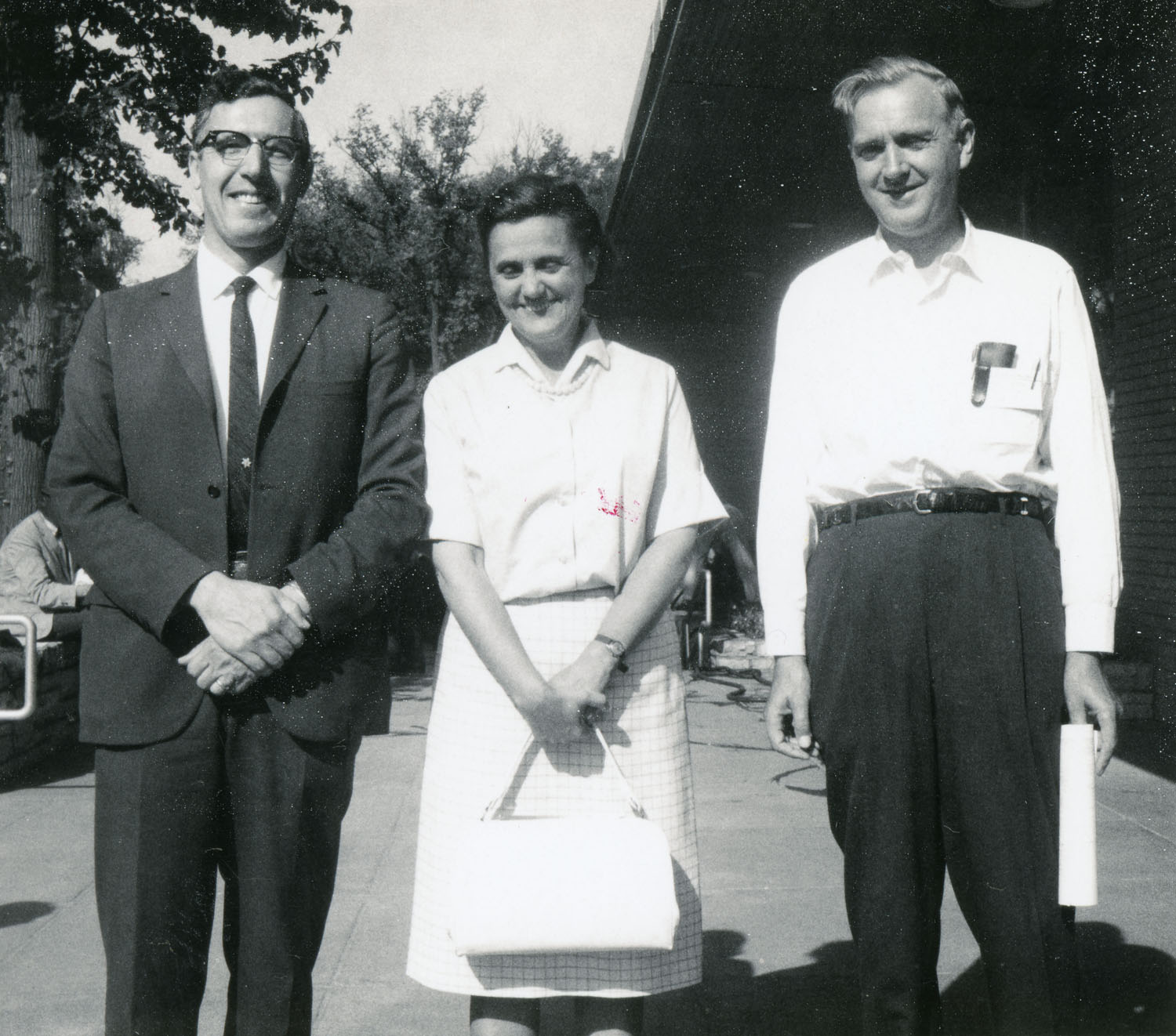
Left to right, Steven Gaal, Lisl Gaal, and Bjarni Jónsson at the AMS-MAA Joint Summer Meetings in Madison, Wisconsin, on August 28, 1968.
Steven Gaal (1924-2016) had Ph.D. advisors Leopold Fejér and Frigyes Riesz (Mathematics Genealogy Project), presumably at Eötvös Loránd University in Budapest, Hungary, where Fejér spent most of his career, or possibly at Szeged University in Hungary, where Riesz spent much of his career. Gaal was a faculty member at the University of Minnesota in Minneapolis from the 1960s onward. Olaf Stackelberg, who was a Ph.D. student of Gaal during the 1960s, remembers him as a "private, studious man, who was kind and helpful to his students." Gaal is now Professor Emeritus at the University of Minnesota (University of Minnesota).
Lisl (or Ilse) Novak Gaal earned her Ph.D. in 1948 at Radcliffe College with the dissertation, "On the consistency of Goedel's axioms for class and set theory relative to a weaker set of axioms," under Lynn Loomis and Willard Van Quine of Harvard University (Mathematics Genealogy Project). Lisl Gaal is Associate Professor Emeritus at the University of Minnesota. Besides logic, set theory, and foundations, she lists Galois theory as a research interest (University of Minnesota). Olaf Stackelberg recalls that "Lisl and Steve Gaal would have their students over to their house for an informal dinner party at year's end, gatherings we enjoyed."
Bjarni Jónsson earned his Ph.D. in 1946 at the University of California, Berkeley, with a dissertation on "Direct decompositions of finite algebraic systems," written under Alfred Tarski. He was a faculty member at the University of Minnesota during the early 1960s (Mathematics Genealogy Project), then in 1966 moved to Vanderbilt University in Nashville, Tennessee, where he is now Distinguished Professor of Mathematics, Emeritus. He lists his research interests as lattice theory, universal algebra, and logic (Vanderbilt University).
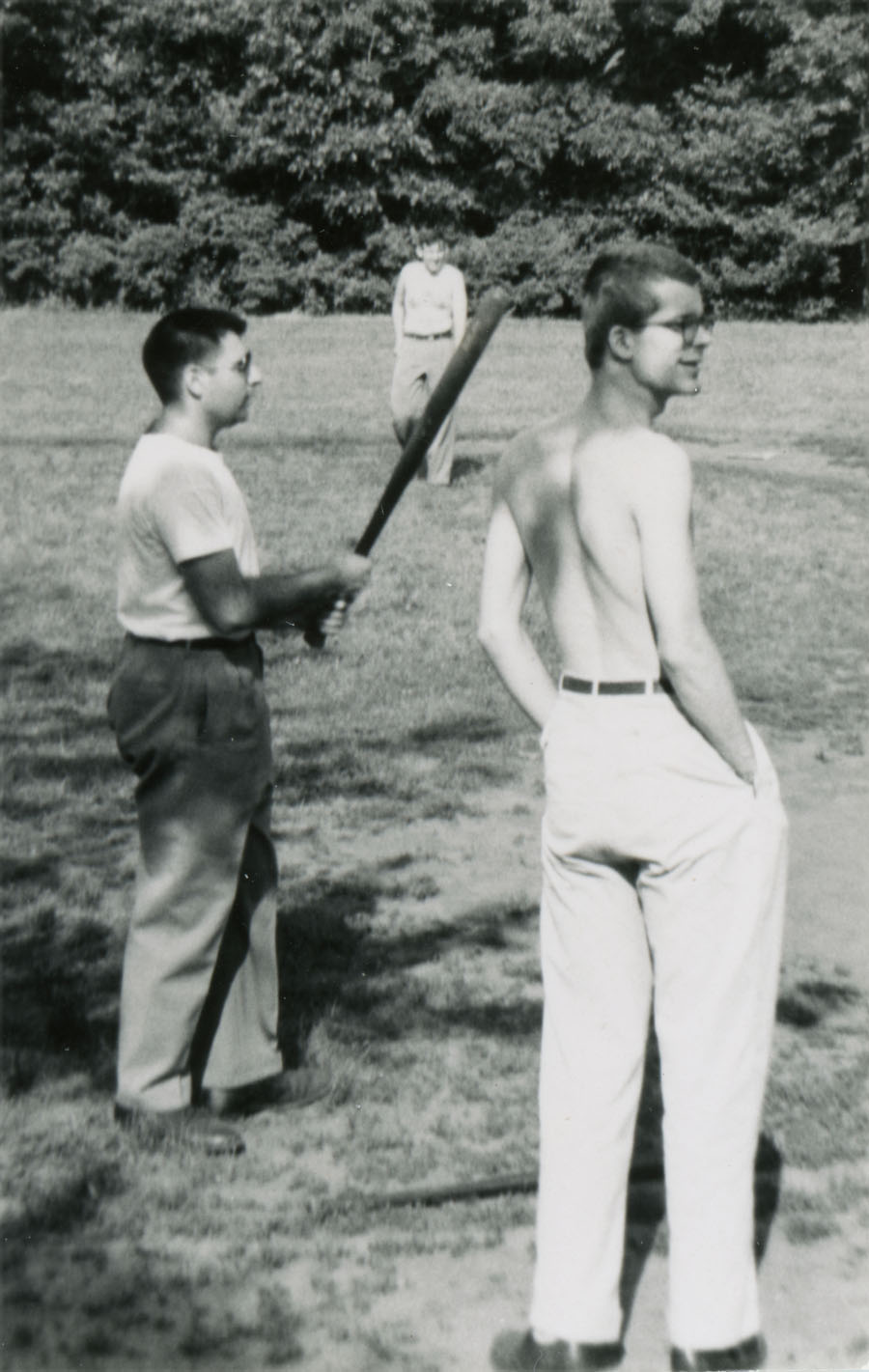
Bernard Galler (1928-2006), at left, and Edward Nelson, whom Halmos identified as "Buzz Galler" and "Ed Nelson," play baseball in Chicago, Illinois, circa 1955. Both Galler and Nelson earned Ph.D.s from the University of Chicago in 1955.
Galler's dissertation was directed by Paul Halmos and Marshall Stone and was titled, "Some results in algebraic logic." Halmos wrote a book, Algebraic logic, on this topic in 1962. From 1955 onward, Galler was a faculty member at the University of Michigan in Ann Arbor, first in mathematics and then, by 1966, in computer science. In 1966, he helped found the Department of Computer and Communication Sciences (University of Michigan). He and his Ph.D. advisor, Halmos, were colleagues at Michigan during Halmos' tenure there from 1961 to 1968.
Edward Nelson also earned his Ph.D. from the University of Chicago in 1955, with the dissertation, "On the operator theory of Markoff processes," written under Irving Segal (Mathematics Genealogy Project). After a three-year fellowship (1956-59) at the Institute for Advanced Study in Princeton, Nelson has spent his career at Princeton University. He lists mathematical logic, foundations of mathematics, bounded arithmetic, and automatic proof verification as his current research interests (Princeton University).
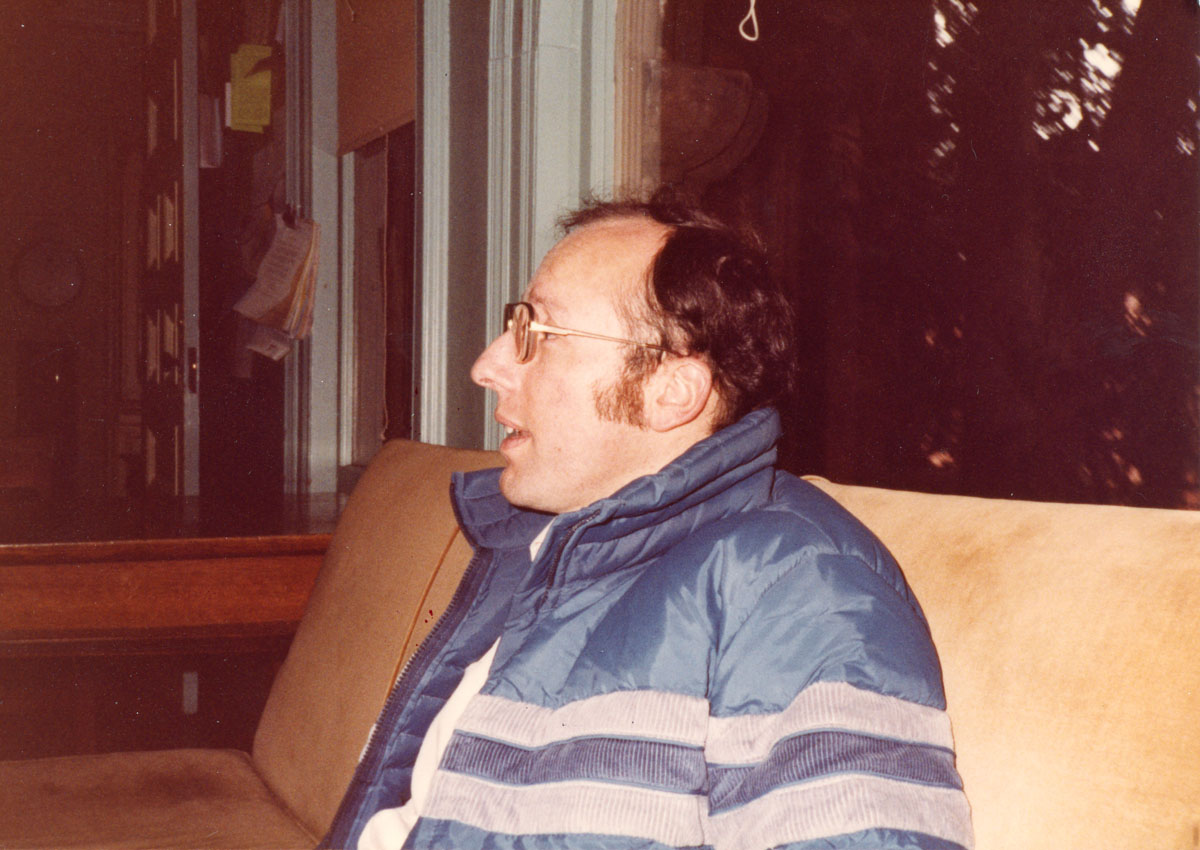
Halmos photographed Joseph Gallian at Carleton College in Northfield, Minnesota, in April of 1983. Gallian earned his Ph.D. in 1971 at the University of Notre Dame in South Bend, Indiana. He has spent his career at the University of Minnesota, Duluth, where he is Morse Distinguished Professor of Teaching and Professor of Mathematics. In 1977, Gallian founded a summer research program for undergraduates at UM-Duluth that became a model for the National Science Foundation Research Experiences for Undergraduates (NSF-REU) program and is still going strong. He has served as co-director of the MAA Project NExT mentoring program for new mathematics faculty members since 1998, and he served as MAA president during 2007-08. (Sources: Mathematics Genealogy Project, MAA Presidents, MAA Project NExT)
For an introduction to this article and to the Paul R. Halmos Photograph Collection, please see page 1. Watch for a new page featuring six new photographs each week during 2012.
Regarding sources for this page: Information for which a source is not given either appeared on the reverse side of the photograph or was obtained from various sources during 2011-12 by archivist Carol Mead of the Archives of American Mathematics, Dolph Briscoe Center for American History, University of Texas, Austin.
Janet Beery (University of Redlands) and Carol Mead (Archives of American Mathematics, University of Texas, Austin), "Who's That Mathematician? Paul R. Halmos Collection - Page 15," Convergence (January 2012), DOI:10.4169/loci003801




